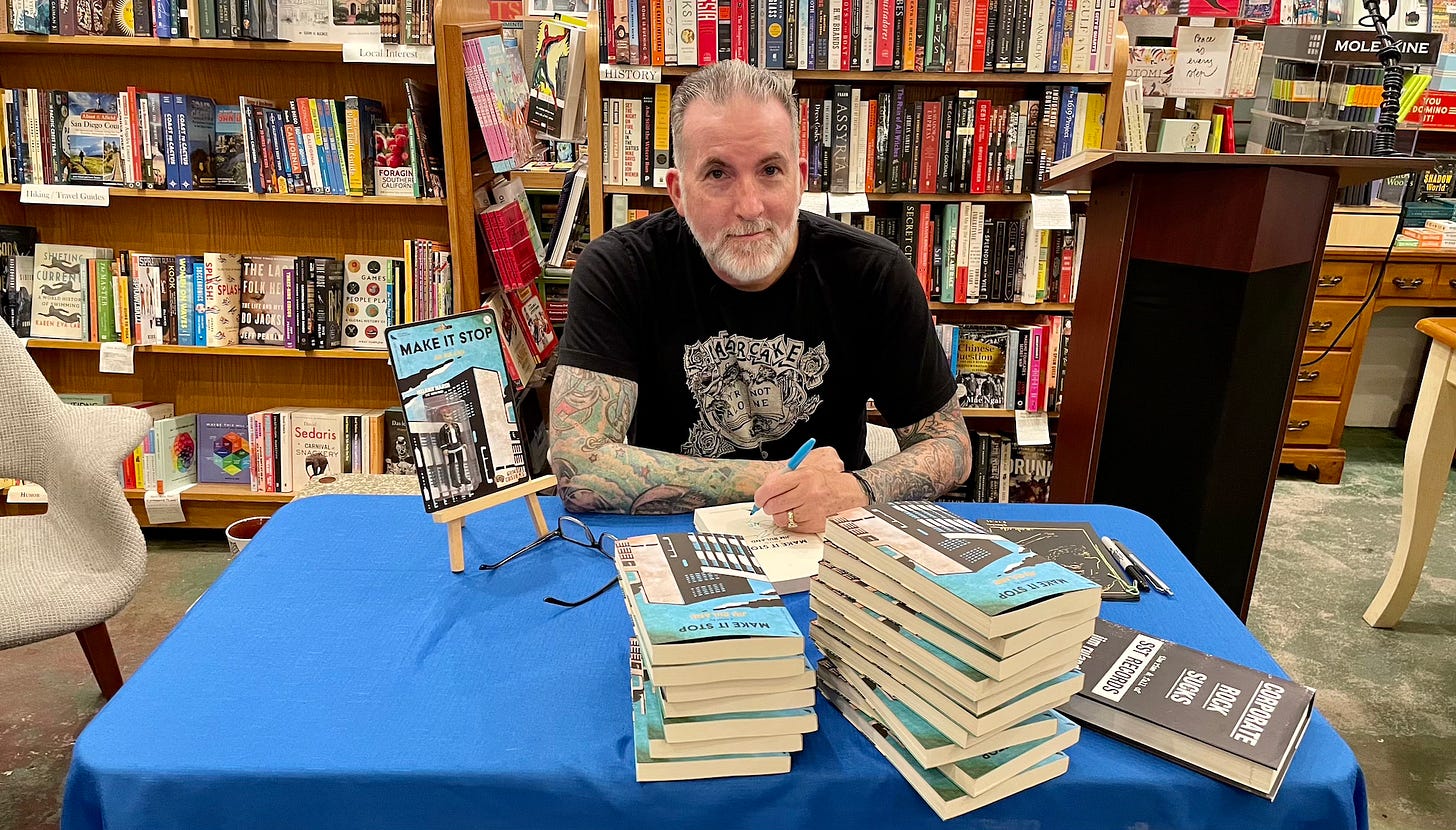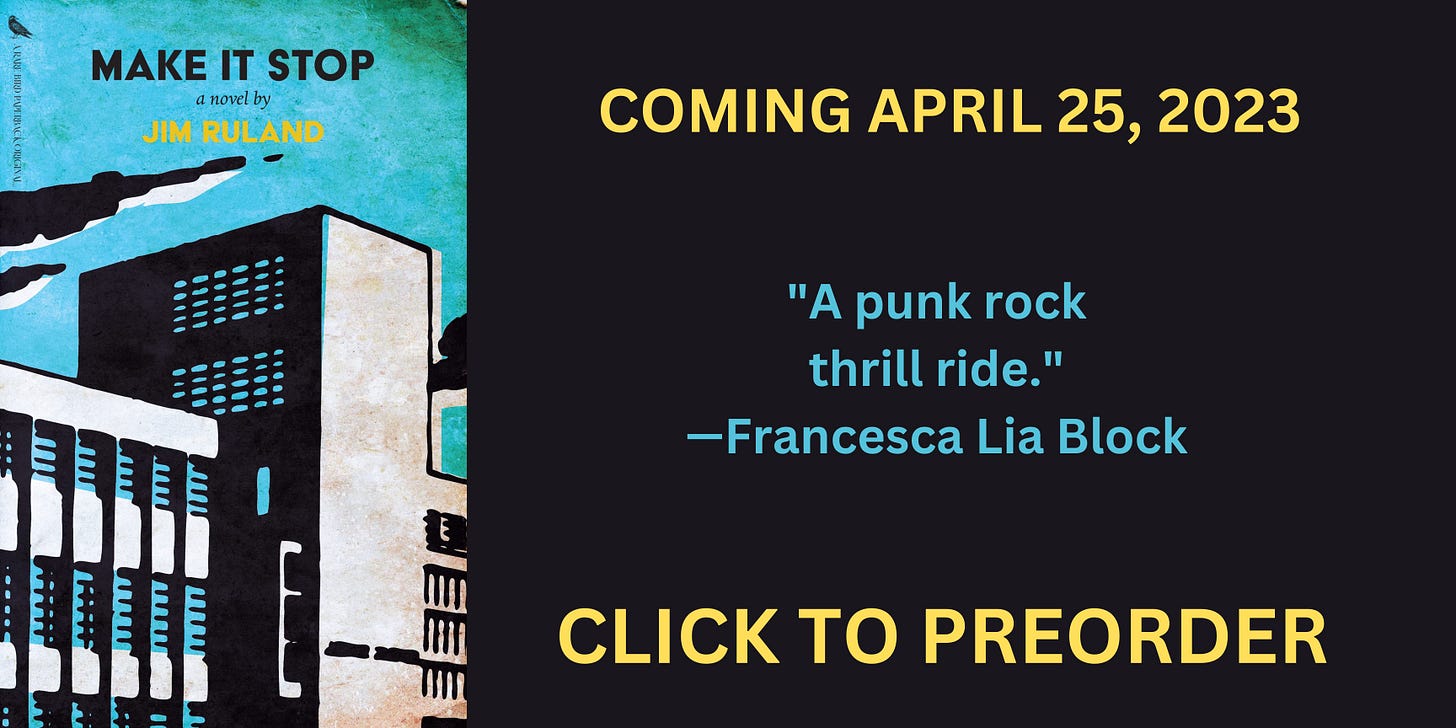The tall white man opened the door. His name was Les. We’d met before but he didn’t recognize us. It had been five years since we’d come to the Two Grey Hills Trading Post in northern New Mexico. He was old then and was older now and walked with the help of a cane.
“I called earlier,” I said.
“You wanted to see some rugs?” he asked.
“That’s right,” I said.
“Come on in.”
The trading post was a long low structure with stone walls. It was established in 1897 and the building has expanded over time, but it was a humble place with tires on the roof to keep the sheeting from blowing away in the wind that travels across the wide open plains of the Navajo reservation between Shiprock and Gallup.
It was cool inside the trading post, too large and too empty to keep properly heated. Five years ago the trading post doubled as a kind of convenience store with snacks and sodas and nonperishable food but not anymore. Most of the shelves were half empty and were limited to supplies for local weavers and a large display of t-shirts.
Les led us to the rug room, which used to be some kind of vault, and was even cooler than the rest of the building. He had a small portable heater set up to keep the rugs from getting too cold. When he asked what we were looking for I told him the last time I was there I’d seen a rug with an unusual pattern that was much longer and narrower than typical Navajo rugs.
Two Grey Hills is famous in weaving circles because of the style of Navajo rugs that were made and sold here. These styles were dictated by many factors from the type of wool harvested from the sheep to the kinds of plants in the region used to manufacture the dyes. The Two Grey Hills style is distinctive for its many shades of grey and typically features a pair perfectly symmetrical shapes that resemble mountains.
The rug I remembered seeing was very different. It was more brown than grey and resembled a series of eye dazzlers that undulated like a snake. I’m hardly an expert in Navajo weaving but I’d never seen anything like it before. I didn’t think I could afford it then but I’d thought about it many times since and regret not buying it. It wasn’t a traditional rug. It was unique, one-of-a-kind, which made it all the more appealing to me.
I explained all this to Les but it didn’t ring any bells for him.
“How long ago was this?”
“Five years ago,” I repeated.
“I wouldn’t have anything from that long ago.”
Nevertheless, he invited us to look at the rugs he had folded and piled in stacks on the floor. So we went in.
We hadn’t planned on coming to Two Grey Hills. Two weeks ago Nuvia was part of a team that hosted a conference at the school where she works. Educators came from all over the world, many of whom she’d met on her trips to Barcelona, Merida, and Medellin. At the conference she met a Navajo educator who taught kindergarten at Newcomb Elementary on the Navajo reservation. When she found out that Nuvia was going to be in Flagstaff on vacation the following week, she invited her to visit her school.
Even though the school was a four-hour drive from Flagstaff we hopped in our trusty EV and hit the road. After recharging in Gallup we headed north to Navajo Nation. We made it to the school just before lunch. The class was almost entirely in Navajo, which most of the children do not speak at home, and the teacher used the Four Sacred Mountains as the foundation for everything she taught. Then we broke for lunch and were served blue corn mush and watermelon alongside the kids. It’s hard to be anything but happy in a room full of kindergarteners.
Two Grey Hills Trading Post lay five miles to the east—about fifteen minutes down a long dirt road. We were so close we felt we had to go. I needed to know if that rug was still there. After we left Newcomb, we headed down the dusty road.
The rug room at the trading post seemed far less robust. I remembered there being many more rugs the last time we visited and other customers coming in and out of the post. But we were the only people there, the only vehicle in the huge dirt lot out front.
Despite the air of decline that hung around the place, Les’s collection was truly astonishing with all kinds of rugs from small doormat-sized pieces for a few hundred dollars to massive, prize-winning room-sized rugs for $25,000. This, too, made my spirits sink. Even if I found a rug comparable to the one I’d fallen in love with, I feared I’d never be able to afford it.
Then I found it.
Les had pointed me to an area where I might find what he called a “runner”: something long and skinny and suitable for a hallway, when I found a rug that had been rolled up instead of folded. I asked Nuvia to help me and as we unrolled it in the dark, chilly vault, I realized I was holding the very same rug I’d coveted. It was bigger and more beautiful than I remembered. It had a black border with four different shades of brown. It was gorgeous.
“Are you sure that’s the same rug?” Les asked.
“I’m sure.”
Each rug was tagged and five years ago I’d taken a photo of the tag. I called the image up on my phone. It was the same tag, the same rug.
“Well, since I didn’t even know I had it,” Les said, “I guess I can give it to you for a little less.”
Les was a shrewd businessman. He knew giving me a break on a rug I already wanted would seal the deal and it did. Five years ago I was on the verge of being laid off from my corporate job and even though I could afford the rug I was afraid of what the future held. I have a great deal more uncertainty in my life now that I’m a full-time writer but I am far less fearful. I know that when life steers you on an adventure the only thing to do is go.
Make It Stop in Southern California
Last night was the first celebration of Make It Stop so it was only fitting that it took place at The Book Catapult—my favorite bookstore in San Diego. I started the event by thanking everyone who needed to be thanked, included Jeremy Richman and Shanna Mahin to whom the book is dedicated. I read the first part of a chapter called “Rehab for Real” at the beginning of the second section—right in the middle of the book. (If you’d like to read it, this except was previously published by HAD as “Evergreen.”)
My friend Patrick Coleman, author of the truly excellent The Churchgoer, led a conversation about the book’s origins and though he was too much of a gentleman to ask “Why did it take so long to write?” we talked about that too.
Remember, since the originally launch date was pushed back to April 25, you can still preorder the book and get a signed copy from Rare Bird. Or you can pick one up at The Book Catapult.
Here are the Southern California events in April:
4/15 LA: Skylight Books in Los Feliz at 5pm with Bucky Sinister
4/22 LA: Unnamed Books with Matthew Zapruder (Details to come)
4/23 LA: LA Times Festival of Books: “Fiction: LA Stories” at 2pm with Tracy Brown, Sammy Harkham, Sarah Priscus & Antoine Wilson
4/25 LA: Book release party in Mar Vista with Terese Svoboda (Contact me if you’d like to attend)
4/26 LA: Book Soup in W. Hollywood at 7pm with Terese Svoboda
Next week I’ll announce the readings for May, which include swings through the Southwest and the Midwest. That’s when things will really pick up…
Thanks for reading and stay safe. Next week’s edition of Message from the Underworld will contain 300% more punk rock.







Wait, can't we see what the rug looks like?!?!
So great to see you at The Book Catapult the other evening and to hear you read and talk about your latest, which I am looking forward to reading. You mentioned Writers, Ink Blazing Laptops and I didn't want to interrupt your eloquent waxing about the book so I didn't interrupt to say that this year's is going to be on May 21st. Love to have you join us again. Who knows what could happen. Thanks, Jim.